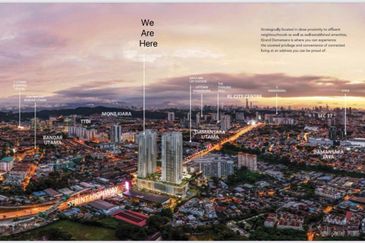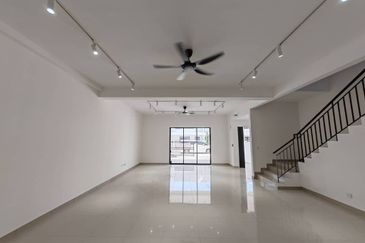PETALING JAYA (July 23): China has in recent years become the largest global capital exporter for cross-border real estate investment, second only to the US.
China’s cross-border real estate investment was valued at US$26.58 billion (RM114 billion) in 2016 while the US investment amounted to US$45.43 billion.
In Knight Frank’s Active Capital Global Report released on July 20, it said Chinese capital has been the key driving force behind global real estate transaction volume in the past few years especially across the Super City markets, which include Los Angeles, New York, London, Paris, Berlin, Shanghai, Hong Kong, Tokyo, Singapore and Sydney.
Other Asian countries in the top 20 are Singapore (6th), Hong Kong (7th), South Korea (11th) and Japan (16th).
“However, some target locations are questioning the sustainability of Chinese investment due to the government’s latest capital outflow controls and the health of the domestic economy,” the report said.
Some deals that involved Chinese capital include Chinese conglomerate HNA Group’s purchase of the iconic 245 Park Avenue in New York for US$2.21 billion, manufacturing company CC Land’s acquisition of The Leadenhall Building, also known as the Cheesegrater, in London for £1.15 billion (RM6.4 billion) and China Investment Corp’s securing Blackstone’s European logistics business Logicor for more than €12 billion (RM60 billion).
The report also noted that previous concerns such as the domestic home inventory glut paled in comparison with impacts of external surprises like Brexit and the US election result, which have seen investors taking advantage of factors such as exchange rate dips.
It was highlighted that while the global marketplace was initially crowded with big-name Chinese insurance firms, large developers and state-owned enterprises (SOEs), there have been more private conglomerates or niche developers including HNA, Fosun International Ltd and R&F, who have made their presence felt globally.
“Some of these new entrants operate differently; they are nimble and are able to make decisions quickly, often transacting higher up the risk curve,” it said.
According to Knight Frank head of Asia-Pacific research Nicholas Holt, the emergence of an array of Chinese investors, institutional, SOEs, developers and private conglomerates in the global real estate markets has undoubtedly been the single-largest trend over the last decade.
“Despite the more stringently applied capital controls and a slight drop in outbound activity in 2017, over the longer term — with the opening of the capital account and the internationalisation of the renminbi — Chinese capital will continue to have a significant impact in the major property markets around the world,” said Holt.
Executive director of Capital Markets Knight Frank Malaysia Allan Sim concurred that while China outbound transaction volume is reducing in several markets mainly due to stricter capital outflow controls, he expects this trend to be temporary and capital controls will loosen when the Yuan exchange rate improves and GDP growth continues on a steadier path.
“Chinese investors are focusing on gateway cities due to stability and depth. Key Southeast Asian hubs — especially cities on the ‘Road and Belt’ route including Malaysia — will continue to attract Chinese investors,” said Sim.
Meanwhile, the report also highlighted that in the next two years, Japanese investors are expected to be increasingly important as government policies are encouraging them to shift to a wider range of investment products aside from its main bulk of assets in financial deposits (50%) and investment trusts (5%).
A total of US$230 billion is set to be directed towards global real estate.
“With the ongoing low growth and interest rate environment, Japanese pension funds are beginning to look at their exposure to real estate — an asset class where they have traditionally been underweight. We are seeing major players, such as the Government Pension Investment Fund (GPIF) to look more closely at listed and non-listed property, both domestically and overseas. The potential for institutions like GPIF to significantly impact offshore major city markets globally in the coming years is considerable,” said head of Knight Frank Japan desk Kenji Nagamine.
TOP PICKS BY EDGEPROP

Bandar Baru Sri Petaling
Sri Petaling, Kuala Lumpur

Far East Residence @ Kuchai
Kuchai Lama, Kuala Lumpur

Oasis 2 @ Mutiara Heights Kajang
Kajang, Selangor

Liu Li Garden, Setia Eco Glades
Cyberjaya, Selangor

Charms of Nusantara, Setia Eco Glades
Cyberjaya, Selangor
















hero.jpg?GPem8xdIFjEDnmfAHjnS.4wbzvW8BrWw)



